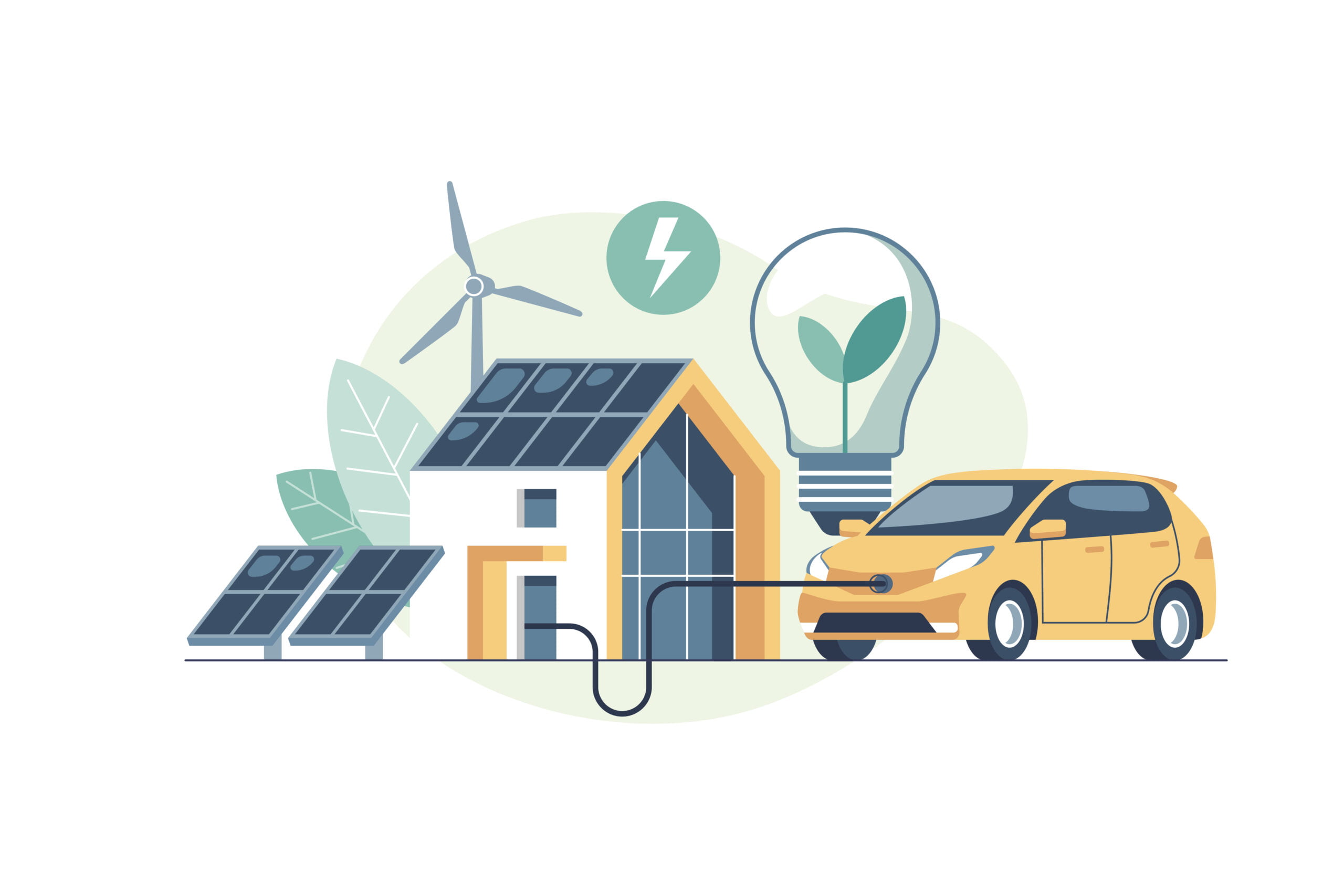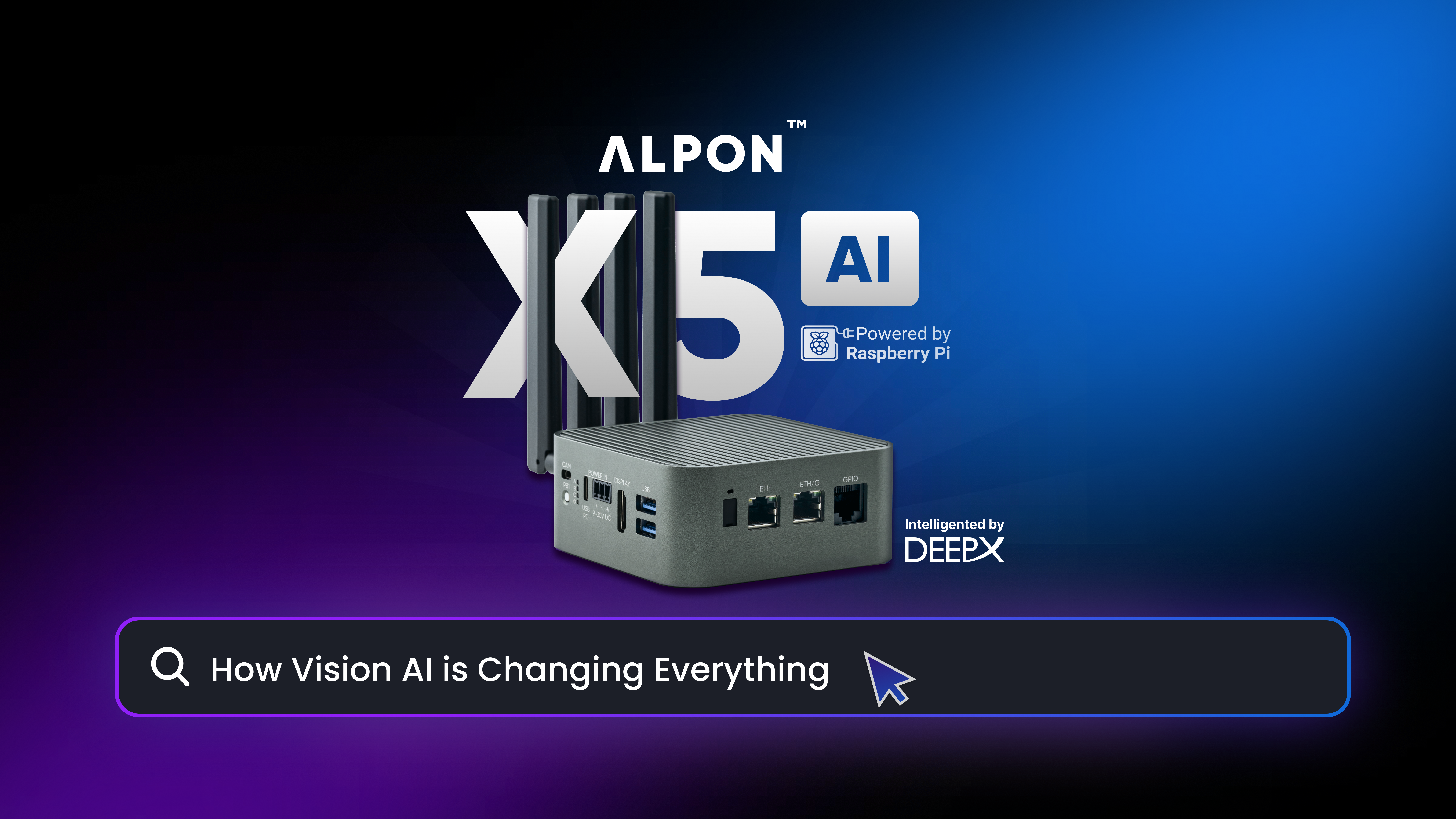The long-predicted crisis of climate change has come to fruition. There’s a good chance that as you’re reading this, it is currently the hottest example of whatever month it is in recorded human history. The consequences for ecosystems and humans are catastrophic, and every possible action needs to be taken ASAP.
One such solution is green buildings. As with much of climate change, at first, it got a reputation as being simply the latest fad, but in fact it’s a necessity to creating a sustainable future. Green buildings prioritize energy efficiency, sustainable design, and eco-friendly materials to produce man-made structures that interact harmoniously with nature rather than in stark opposition to it.
As we enter this new age, where the blueprint of urban landscapes gets sketched by both sustainable philosophies and digital threads, our emphasis isn’t just on the concrete and steel. Now, imagine the challenges a Single Board Computer faces when trying to seamlessly integrate into this matrix of connections. In the same way companies like Sixfab are revolutionizing how cellular connectivity is integrated into single-board computers (SBCs), modern structures are busy harnessing similar technological advancements to achieve sustainability. In this article, we’re going to take a closer look into green buildings, seeing how the parallels with the meticulous detail Sixfab brings to connectivity become ever clearer.
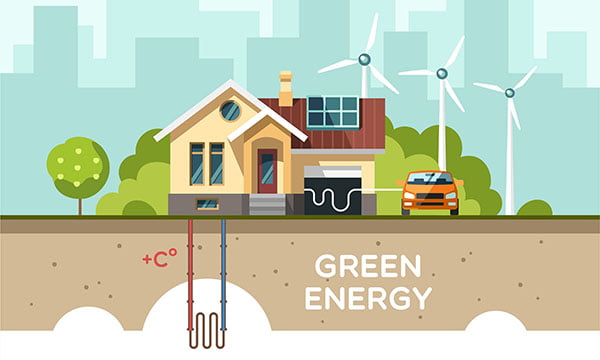
What are Green Buildings?
But of course just calling something green doesn’t mean it is actually “better.” Green buildings, often referred to as sustainable or eco-friendly buildings, represent an architectural philosophy centered on the harmonious relationship between the built environment and the natural world. These structures are designed, constructed, and operated to minimize their environmental impact throughout their life cycle, from material procurement to demolition.
At the heart of any green structure is a simple principle: make the most out of every resource. Think less electricity wastage, more rainwater harvesting, and a big thumbs-up to earth-loving materials. But it’s not just about being kind to Mother Nature. Step inside, and it’s clear that they’re designed for us folks too. Breathing easy with top-notch air systems? Check. Basking in natural sunlight instead of fluorescent glows? Absolutely. Battling global pandemics and tomorrow’s health challenges? These places have our backs. In a world where buildings once just stood tall, green structures are teaching them to walk gently on the earth and wrap their inhabitants in comfort and safety.
Green structures adhere to an ethos of resource optimization. This translates to enhanced energy conservation techniques, advanced rainwater harvesting systems, and the incorporation of sustainable materials. It’s not merely about environmental harmony, though. A detailed look into the indoor environment quality (IEQ) metrics of these structures reveals state-of-the-art ventilation systems, optimized daylighting strategies, and resilient design techniques to tackle emerging global challenges like pandemics.
Buildings get certified as “green” or sustainable through a variety of established rating systems that evaluate their environmental impact, resource efficiency, and sustainable design features. The certification process can be intricate and requires a meticulous approach to design, documentation, and verification. Achieving a green building certification not only signifies the building’s sustainable attributes but also often adds to its market value and recognition in the industry.
Well-known certification agencies around the world include:
LEED (Leadership in Energy and Environmental Design): Developed by the U.S. Green Building Council (USGBC), LEED is one of the most recognized green building certification systems worldwide. It assesses buildings based on a variety of criteria, including energy efficiency, water usage, indoor environmental quality, and material selection.
BREEAM (Building Research Establishment Environmental Assessment Method): Hailing from the UK, BREEAM stands as one of the world’s earliest and most recognized green building certification schemes. This system assesses structures based on numerous sustainable aspects, including energy efficiency, well-being, and innovation, among others.
Green Star: A green assessment framework for Australian structures, this system evaluates the eco-friendly design, building process, and ongoing management of buildings, interior setups, and larger community spaces.
Living Building Challenge: A stringent criterion demanding structures to achieve a set of lofty performance benchmarks, encompassing net zero in energy, waste, and water consumption.
WELL Building Standard: Though the main emphasis is on the health and comfort of those inside the building, it closely aligns with eco-friendly construction concepts. It takes into account factors such as air quality, water, nutrition, illumination, physical activity, coziness, and mental well-being.
Passive House (or Passivhaus): Emerging from Germany, this criterion is chiefly centered on crafting supremely energy-efficient buildings, demanding minimal energy for both warming and cooling. (Stephanie Vierra, Assoc, 2023)
The Benefits of Green Buildings for Energy Efficiency
Green buildings and conventional buildings present stark contrasts in terms of energy efficiency. At the heart of green buildings is the principle of minimizing energy consumption while maximizing the use of renewable resources. These structures often incorporate advanced technologies such as high-performance insulation, energy-efficient windows, and state-of-the-art HVAC systems, all tailored to reduce energy waste. Additionally, green buildings are frequently integrated with renewable energy systems like solar panels or wind turbines, enabling them to generate their power, sometimes even contributing excess energy back to the grid. The emphasis on energy-efficient appliances and lighting, combined with design strategies like passive solar heating and natural ventilation, further distinguishes green buildings.
Conventional buildings, on the other hand, typically rely on older construction practices and standards that don’t prioritize energy conservation. These structures often face issues like thermal bridging, inadequate insulation, and inefficient heating and cooling systems. As a result, they tend to consume more energy, leading to higher utility bills and a greater carbon footprint. Unlike their green counterparts, conventional buildings rarely harness renewable energy, depending instead on non-renewable energy sources which further exacerbate their environmental impact. The culmination of these differences signifies not just a variation in construction methodologies, but a fundamental shift in understanding the long-term value of sustainability in architecture.
Integrating Renewable Energy in Sustainable Architecture
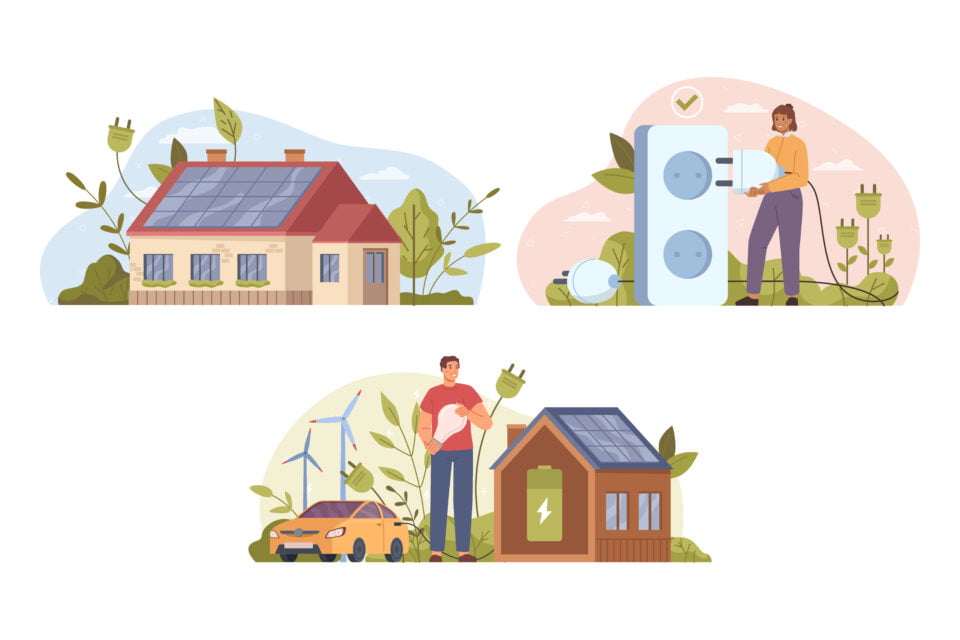
Here’s the thing about green buildings—you can’t talk about them without discussing renewables. They go together. Solar panels, wind turbines, and all those other cool renewable tech stuff? They’re the pillars of the entirety of sustainable architecture.
Consider, for instance, bifacial solar panels that harness sunlight from both sides or Building-Integrated Photovoltaics (BIPVs) that seamlessly integrate into building facades. Advanced vertical axis wind turbines, specifically tailored for urban environments, serve as both architectural marvels and energy generators. These technologies, collectively, are pivotal in reducing our dependency on traditional power grids and fostering energy independence.
Eco-friendly Construction Materials for Environmental Sustainability
The foundation of any green building lies in its choice of construction materials. Eco-friendly materials, derived from renewable or recycled sources, play an essential role in promoting environmental sustainability. Bamboo, reclaimed wood, and recycled steel are just a few examples. These materials not only reduce the environmental impact during the construction phase but also ensure a reduced carbon footprint throughout the building’s lifespan.
Beyond the traditional notion of using recycled materials, green buildings are pioneering the use of advanced composite materials that blend functionality with sustainability. Take, for instance, low embodied carbon concrete, which incorporates fly ash or slag to reduce its carbon footprint. There’s also the burgeoning field of bio-based insulators made from materials like mycelium, which provide excellent thermal properties while ensuring minimal environmental degradation. Additionally, advanced fenestration materials, like electrochromic smart glass, can change transparency based on external conditions, enhancing energy efficiency. (Wang, Yilin, 2022)
The Role of Green Building Design in Reducing Carbon Footprint
Design plays a pivotal role in the success of a green building. Through intelligent design strategies, architects and engineers can drastically reduce a building’s carbon footprint. This involves considerations like passive solar design, which maximizes natural light and heat, or the inclusion of green spaces within the building structure, promoting natural insulation and improved air quality. The end goal is always to create a structure that coexists with nature rather than opposing it.
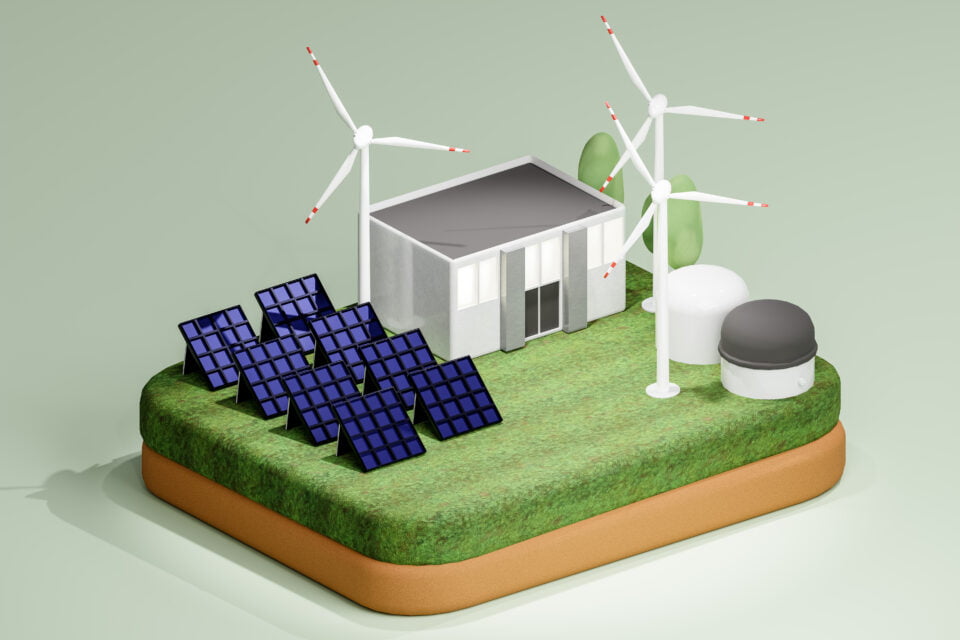
For example, architects face challenges like managing solar gain in green building designs. In a hot climate, a building with excessive sun exposure can overheat, increasing cooling costs. To counteract this, architects might orient the building so most windows face north and south, reducing direct sunlight from the intense east and west. They may also add shading devices like overhangs or louvers, use high-performance glazing on windows to reduce heat while allowing light, and recommend reflective or green roofs to minimize heat absorption. These strategies help maintain cooler interiors, reducing reliance on energy-consuming cooling systems. (Judy Fosdick, 2023)
Energy-efficient Solutions in Sustainable Urban Planning
When we talk about sustainable urban planning, we’re diving into this big, varied world that spans from how we move around in cities to, well, where we chuck our trash. Now, in this vast landscape, the star players are those energy-efficient tricks up our sleeves. Think about smartly placing buildings so they don’t turn into sizzling hot spots, or adding a splash of green amid all that gray concrete. By blending in these strategies, our cities aren’t just becoming cooler places to hang out, but they’re also giving a big thumbs-up to energy savings.
When delving into the intricacies of sustainable urban planning, we’re not just touching on broad themes; we’re discussing detailed frameworks like Transit-Oriented Development (TOD), which emphasizes the importance of public transport connectivity in urban designs. We also explore advanced stormwater management systems, integrating permeable pavements and bio-retention facilities. Microgrid solutions play a role in ensuring energy resiliency, allowing clusters of buildings to operate independently from the central grid, using distributed energy resources and advanced control systems.
Green Building Innovations for Passive Energy Conservation
Innovation is the backbone of green buildings. Over the years, myriad technologies and design principles have emerged, focusing on passive energy conservation. Examples include the use of phase change materials that store and release heat as required or employing Trombe walls that absorb solar energy during the day and release it during the night. These innovations ensure that buildings remain comfortable without the constant need for external energy inputs.
Innovation in green buildings extends to harnessing passive energy conservation. It’s not just about novel technologies but about rethinking architectural concepts. Consider the envelope-first approach, emphasizing high R-value insulations, advanced thermal breaks, and air-tightness. Techniques like thermal massing, where materials like stone or concrete are used to store heat during the day and release it during cooler times, become essential. Moreover, cutting-edge technologies like dynamic shading systems automatically adjust based on external solar angles, offering optimal daylight without the associated heat. (Constantin C. Bungau 1,2,Tudor Bungau 3,*ORCID, Ioana Francesca Prada 2,* and Marcela Florina Prada, 2022)
Benefits of Green Roofs in Sustainable Building Designs
Green roofs have gained immense popularity, and rightly so. They act as natural insulators, reducing the need for artificial heating or cooling. Moreover, they help manage stormwater, reduce noise pollution, and even offer a habitat for urban wildlife. The integration of green roofs in building designs showcases how merging aesthetics with functionality can lead to sustainable outcomes. As this technology grows in popularity, we see more and more cities looking like this view of modern buildings and streets in Fort Lee, New Jersey compared with the standard concrete jungle we’re used to.
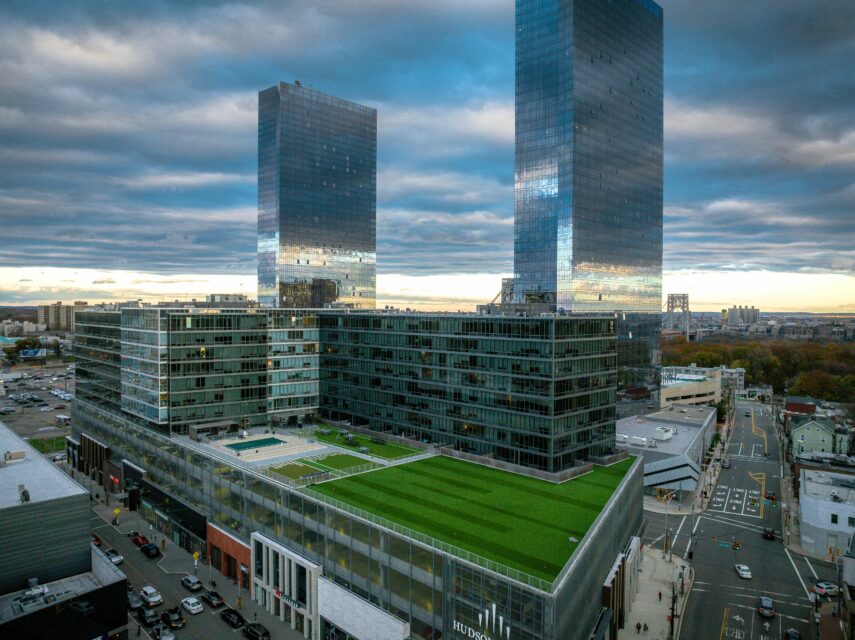
Key Takeaways
As we conclude our architectural journey, it becomes apparent that the future of green buildings isn’t merely about physical constructions; it’s an integrated digital experience. Similar to how a building’s components need to align for optimal sustainability, in the digital realm, elements like hardware, OS, network protocols, and cellular networks need perfect synchronization. This is where Sixfab’s magic lies, crafting seamless connections in the world of SBCs. Envision a tomorrow where walls converse with gadgets and devices respond to roofs – that’s the intertwined future of green building and technology we’re excitedly headed towards.
Green buildings aren’t just fancy structures; they’re there to be friends with our planet. Every time we decide to go for an eco-friendly twist in our constructions or pick materials that Mother Nature would nod at, we’re giving the planet a virtual high-five. Green buildings? They’re all about playing nice with nature. Imagine them using sun and wind as their backup power sources, rather than always leaning on the old-school grid.
It’s like giving buildings an eco-makeover. They start to think about their diet, focusing on what kind of energy they consume and how they can last longer without harming the environment. They might even flaunt a trendy green roof, not just for the Instagram-worthy shots but for the cool perks like keeping things warm without heaters and giving birds a place to chill.
As for what the future holds? It’s anyone’s guess. With the climate doing its unpredictable dance – think scorching summers and “I-can’t-feel-my-toes” winters – we’re all trying to keep up. The world’s ice is pulling a vanishing act, and that means we’ve got to get creative and fast. Our buildings are bound to change, evolving to be more in tune with the planet’s rhythm, and we’re all here for that jam.
Bibliography
- Green Building Standards And Certification Systems, by Stephanie Vierra, Assoc. AIA, LEED AP BD+C, Vierra Design & Education Services, LLC, March 23rd, 2023. https://www.wbdg.org/resources/green-building-standards-and-certification-systems
- Passive Solar Heating, by Judy Fosdick, Tierra Concrete Homes Updated by U.S. Department of Energy Federal Energy Management Program (FEMP) https://www.wbdg.org/resources/passive-solar-heating
- Green Buildings as a Necessity for Sustainable Environment Development: Dilemmas and Challenges, by Constantin C. Bungau 1,2, Tudor Bungau 3,*ORCID, Ioana Francesca Prada 2,* and Marcela Florina Prada 1ORCID https://www.mdpi.com/2071-1050/14/20/13121
